Mirella Sichirollo Patzer's Blog, page 31
March 18, 2013
Above All Things by Tanis Rideout
I'm very excited to welcome author Tanis Rideout to our blog today. Next week, Viking Penguin will be officially releasing her eagerly anticipated biographical novel about Ruth Turner Mallory, the wife of George Mallory who climbed Mount Everest in the early 1900's.
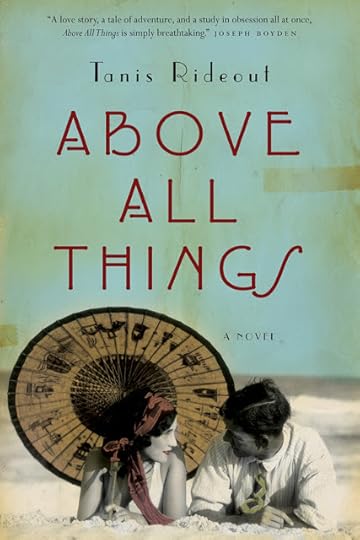
Tanis Rideout
Author of Above All Things
(Viking
Penguin, published 7th March)
About Ruth Mallory
Above
All Things is a fictional reimagining of George
Mallory’s third attempt on Mt. Everest. The novel alternates between George’s struggles
on the mountain and his wife’s, Ruth’s, as she waits for him at home in
Cambridge. While George’s adventures may take up the bulk of the novel, Ruth is
undoubtedly the heart of it.
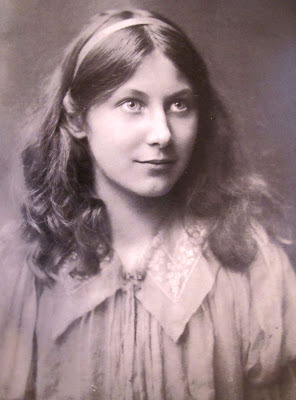
Ruth Turner Mallory
When I first set about writing I was certain I would have an easier time
writing Ruth than I would writing George. After all, I had never been to Everest,
never climbed a mountain. I’d never even really given those things much
thought. But I was certain that I could relate to Ruth, would understand her –
after all, who hasn’t been left behind, hasn’t been lonely and over whelmed.
It was Ruth though that proved the
difficult one. There are seemingly endless pages written about George and his
temperament and his days and his desires. George had an adventure to set off on.
Ruth, though was circumscribed by her time and place. She was a woman of at
certain class, a certain background, a certain town and country. Her world was
infinitely smaller than George’s and yet had to be able to engage a reader as
strongly as he did.
And yet – what I believed, what I knew must
be true, was that in order for George and Ruth to have been married for a
decade, to be so seemingly in love despite long absences, dangers and
difficulties, that Ruth had to be an exceptional woman.
By creating a single, important day in
Ruth’s life, one day out of her endless days of worrying and waiting, the
reader is able to follow her through those needs and desires and wants. And
even though it is one day against George’s many, it is her emotional avalanches
and crevasses, that to me, anchor so much of the book.
I was lucky, while I was writing, to
receive a grant from the Canadian government that allowed me to travel to
England to research. My time there included several days in Cambridge, at
Magdalene College. While there I was able to read many of the letters that
George and Ruth had written to each other over the course of their marriage. It
was there that Ruth really came alive for me – that I was able to more fully
conceive of her as a complete character with her own wants and needs, entirely
separate from her husband’s, her children’s.
In those pages I found a woman that was
incredibly bright, although a terrible speller. (If my memory serves, she left
school at a young age after her mother died.) A woman who was thoughtful and
questioning and in some ways incredibly modern.
In her letters Ruth is very cognizant of
the kind of parent she wants to be, the kind of partner. She wrote to George
about how they should behave towards each other, what they should model for
their children. How important it was to try and stay abreast of issues and
ideas so that they might better connect with their children. I was surprised
and moved by the woman I found in those pages. I hope I was able to try and
make a woman like her come to life in my own.
WE LOVE COMMENTS

From History and Women










Tanis Rideout
Author of Above All Things
(Viking
Penguin, published 7th March)
About Ruth Mallory
Above
All Things is a fictional reimagining of George
Mallory’s third attempt on Mt. Everest. The novel alternates between George’s struggles
on the mountain and his wife’s, Ruth’s, as she waits for him at home in
Cambridge. While George’s adventures may take up the bulk of the novel, Ruth is
undoubtedly the heart of it.

Ruth Turner Mallory
When I first set about writing I was certain I would have an easier time
writing Ruth than I would writing George. After all, I had never been to Everest,
never climbed a mountain. I’d never even really given those things much
thought. But I was certain that I could relate to Ruth, would understand her –
after all, who hasn’t been left behind, hasn’t been lonely and over whelmed.
It was Ruth though that proved the
difficult one. There are seemingly endless pages written about George and his
temperament and his days and his desires. George had an adventure to set off on.
Ruth, though was circumscribed by her time and place. She was a woman of at
certain class, a certain background, a certain town and country. Her world was
infinitely smaller than George’s and yet had to be able to engage a reader as
strongly as he did.
And yet – what I believed, what I knew must
be true, was that in order for George and Ruth to have been married for a
decade, to be so seemingly in love despite long absences, dangers and
difficulties, that Ruth had to be an exceptional woman.
By creating a single, important day in
Ruth’s life, one day out of her endless days of worrying and waiting, the
reader is able to follow her through those needs and desires and wants. And
even though it is one day against George’s many, it is her emotional avalanches
and crevasses, that to me, anchor so much of the book.
I was lucky, while I was writing, to
receive a grant from the Canadian government that allowed me to travel to
England to research. My time there included several days in Cambridge, at
Magdalene College. While there I was able to read many of the letters that
George and Ruth had written to each other over the course of their marriage. It
was there that Ruth really came alive for me – that I was able to more fully
conceive of her as a complete character with her own wants and needs, entirely
separate from her husband’s, her children’s.
In those pages I found a woman that was
incredibly bright, although a terrible speller. (If my memory serves, she left
school at a young age after her mother died.) A woman who was thoughtful and
questioning and in some ways incredibly modern.
In her letters Ruth is very cognizant of
the kind of parent she wants to be, the kind of partner. She wrote to George
about how they should behave towards each other, what they should model for
their children. How important it was to try and stay abreast of issues and
ideas so that they might better connect with their children. I was surprised
and moved by the woman I found in those pages. I hope I was able to try and
make a woman like her come to life in my own.
WE LOVE COMMENTS

From History and Women









Published on March 18, 2013 05:13
March 15, 2013
The Maid and the Queen by Nancy Goldstone
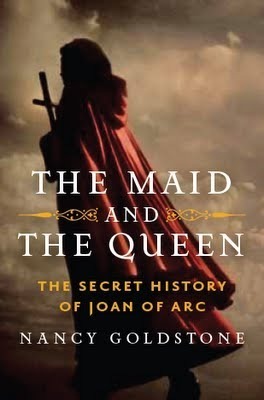
The untold story of the
extraordinary queen who championed Joan of Arc.
Politically
astute, ambitious, and beautiful, Yolande of Aragon, queen of Sicily, was one
of the most powerful women of the Middle Ages. Caught in the complex dynastic
battle of the Hundred Years War, Yolande championed the dauphin's cause against
the forces of England and Burgundy, drawing on her savvy, her statecraft, and
her intimate network of spies. But the enemy seemed invincible. Just as French
hopes dimmed, an astonishingly courageous young woman named Joan of Arc arrived
from the farthest recesses of the kingdom, claiming she carried a divine
message-a message that would change the course of history and ultimately lead
to the coronation of Charles VII and the triumph of France.
Now,
on the six hundredth anniversary of the birth of Joan of Arc, this fascinating
book explores the relationship between these two remarkable women, and deepens
our understanding of this dramatic period in history. How did an illiterate
peasant girl gain access to the future king of France, earn his trust, and
ultimately lead his forces into battle? Was it only the hand of God that moved
Joan of Arc-or was it also Yolande of Aragon?
In the novel THE MAID AND THE QUEEN, author Nancy Goldstone
proposes that Yolande of Aragon, Queen of Sicily, was a reckoning force behind
Joan of Arc’s rise to power. It is an interesting premise and forms the basis
of this novel about these two very remarkable women. The author has successfully
blended their lives together, crossing paths amid the convoluted machinations
of royal courts, political aspirations, and military secrets.
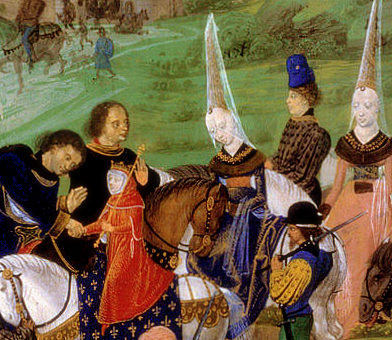
Yolande of Aragon

Joan of Arc
Could these two women truly have met and known each other? Of course. How else could a poor young woman
from an obscure town in France gain the introductions necessary to reach the
loftiest heights of royal power? The author does her research to make this a very compelling possibility.
Yolande of Aragon was the wife of Louis II, a member of the
French royal family and King of Sicily.
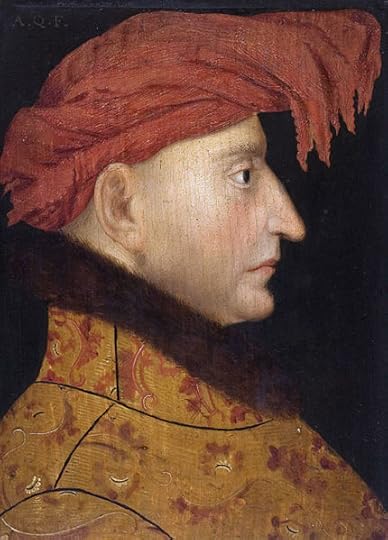
Louis II
With her husband embroiled in fights in Italy for his claim to the
kingdom of Naples and The Hundred Year War, Yolande sought to help her husband and
France any way she could. Thus, she used Joan of Arc. The connection between
the two women was through the town of Domrémy in the duchy of Bar where Joan lived and Yolande’s mother who once held that duchy as her ancestral home.
THE MAID AND THE QUEEN is a story told in three parts. The
first part tells the life of Yolande, the second part focuses on the life of
Joan, and the final part concludes with the latter part of Joan’s and Yolande’s
life.
The research is meticulous. The beauty and sadness of Joan’s
story compliments the political events Yolande found herself embroiled in. There
are plenty of gripping scenes and emotional passages. This is a fascinating
novel about two powerful women, who were ahead of their time, struggling to
survive in a world dominated by men. A very memorable read indeed.
WE LOVE COMMENTS

From History and Women









Published on March 15, 2013 15:45
March 11, 2013
Margaret Tudor - The Forgotten Queen by D.L. Bogdan
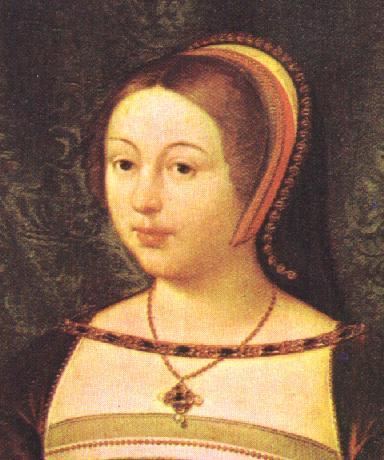
Margaret Tudor
Like most women of her time, Princess Margaret Tudor was a
political asset, to be married off to enhance her family’s wealth or power.
When she was 6, her father, King Henry VII betrothed her to Scotland’s King
James IV as a means to link the two countries together, end centuries of
historical discord between them.
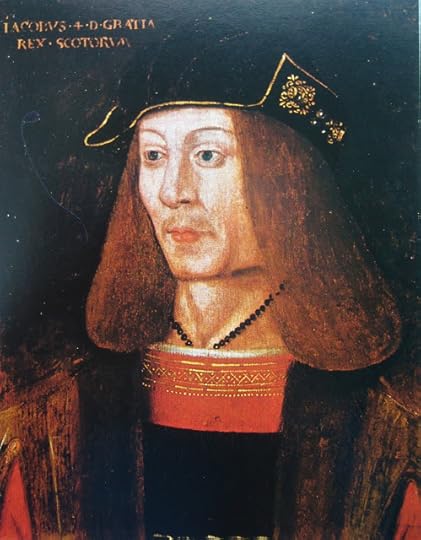
James IV
When she was 14, before could depart for Scotland to marry,
she suffered two severe losses. Her brother, Arthur, heir to the throne, died.
Her mother, died shortly thereafter in childbirth.
After a brief period of grief, she set out for Scotland
where she married James. The wedding feast was lavish with jousts and much
celebration.
At first, Margaret struggled with settling into her new life as is evident in a letter she wrote to her father:

Margaret’s letter to her father
Note: The first part was written by a servant and the
bottom portion is in Margaret’s own hand.
Courtesy of http://tudorhistory.org
©1995-2013 Lara E. Eakins
Here is the translation:
My most dear lord and
father, in the most humble wise that I can think, I recommend me unto your
Grace, beseeching you of your daily blessing, and that it will please you to
give hardy thanks to all your servants the which by your commandment have given
right good attendance on me at this time. And especially to all these ladies
and gentlewomen which hath accompanied me hither, and to give credence to this
good lady the bearer hereof, for I have showed her more of my mind than I will
write at this time.
Sir, I beseech your
Grace to be good and gracious lord to Thomas, which was footman to the Queen my
mother, whose soul God have pardon; for he hath been one of my footmen hither
with as great diligence and labor to his great charge of his own good and true
mind. I am not able to recompense him, except the favor of your Grace.
Sir, as for news I
have none to send, but that my lord of Surrey is in great favor with the King
here that he cannot forbear the company of him no time of the day. He and the
Bishop of Murray ordereth everything as nigh as they can to the King's
pleasure. I pray God it may be for my poor heart's ease in time to come. They
call not my Chamberlain to them, which I am sure will speak better for my part
than any of them that be of that counsel. And if he speak anything for my
cause, my lord of Surrey hath such words unto him that he dare~speak no
further.
God send me comfort to
his pleasure, and that I and mine that be left here with me be well entreated
such ways as they have taken. For God's sake, Sir, hold me excused that I write
not myself to your Grace, for I have no leisure this time, but with a wish I
would I were with your Grace now, and many times more, when I would answer.
As for this that I
have written to your Grace, it is very true, but I pray God I may find it well
for my welfare hereafter. No more to your Grace at this time, but our Lord have
you in his keeping.
Written with the hand
of your humble daughter
Margaret
Courtesy of http://tudorhistory.org
©1995-2013 Lara E. Eakins
Margaret gave birth to a son who they called James, but he
lived only for a year. Her next child survived only hours before dying. News of
her own father’s death brought her even more sadness. Her brother, Henry VIII
was no king of England. Soon, she became pregnant again; this time giving birth
to a son they named Arthur. At first Arthur thrived, but died when he was nine
months old.
The grief-stricken Margaret became pregnant yet again and
gave birth to another son they named James. Fortune smiled upon her this time,
for James survived until adulthood.
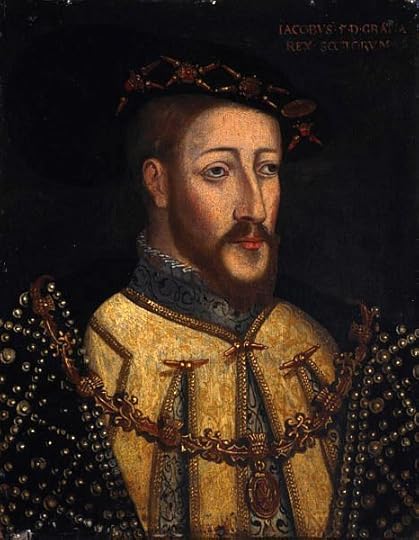
James V
Mary Tudor's Son with James IV
Unfortunately, relations between her husband and her
brother, Henry VIII, became strained. War soon erupted at the Scottish/English
border. Pregnant once more, Margaret bid her husband farewell and watched him
march off to war.
James was killed in battle, leaving Margaret a widow and his
one year old son, James, king of Scotland. His will named Margaret as regent
for his young son provided that she not remarry. She gave birth to another son
who she named Alexander. He was bestowed the title of Duke of Ross.
But Margaret was a very young woman and soon, she fell in
love and remarried. Her new husband was Archibald Douglas, 6th Earl of Angus.
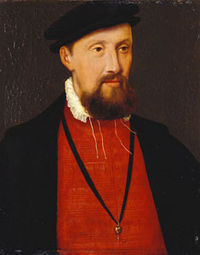
Archibald Douglas
6th Earl of Angus
The
Scottish nobles, in keeping with their late king’s wishes, summoned John
Stuart, Duke of Albany (a cousin to the king, and next in line to the throne
after little Alexander’s death) to be regent in her place. Immediately, her
children were seized and she was stripped of all income.
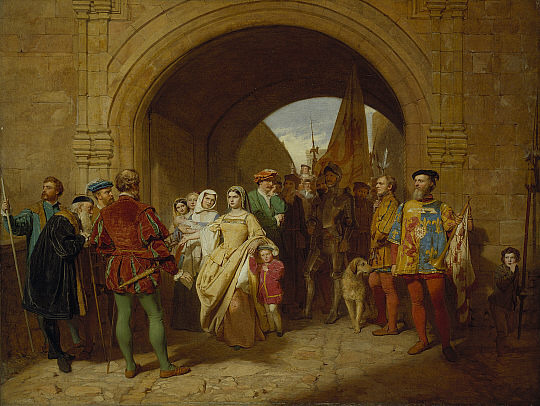
Margaret pleading with Parliament to remain with her son
Pregnant with her new husband’s child, Margaret and
Archibald fled to England. There, lodged at Harbottle Castle, Margaret gave
birth to a daughter they named Margaret Douglas. After the birth, Margaret became
very ill and nearly died. Due to the severity of her illness, she was not told
that her son, Alexander, had died in Scotland.
When Archibald returned to Scotland, Margaret remained in
England, travelling to London, where her brother honored her with month-long celebrations.
There she remained for one year, until she was promised safe conduct to return
to Scotland.
Upon returning home, Margaret was devastated to learn her
husband had taken a mistress and they were living the high life off her Scottish
revenues. All hopes were dashed into misery as she found herself trapped in an
unhappy marriage, stripped of all power, lacking money to live comfortably, and
denied contact with her son, James.
Desperate to improve her circumstances, Margaret entered
into an alliance with the Earl of Arran. Together, they overthrew her son’s
regent and formally made him king, with Margaret helping her 12 year old son govern.
All was well for a time, but soon, Archibald returned and took control.
Margaret finally secured an annulment and married Henry
Stewart, her treasurer. Archibald acted quickly and arrested Margaret’s new
husband on the grounds that she had married without permission. By now, her son
was 16 and he removed Archibald from power. He bestowed the title of Lord
Methven to his new stepfather and the Scottish parliament proclaimed Angus and
his followers traitors. Ever illusive, Archibald escaped death by fleeing to London
once more.
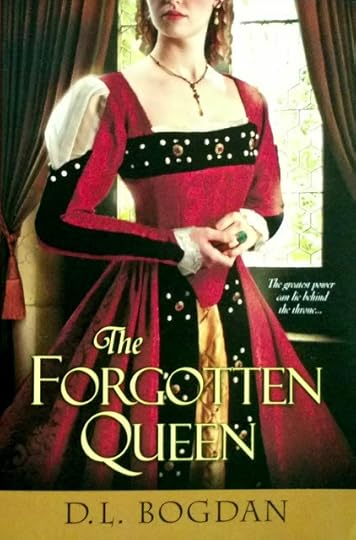
Review:
The novel, The Forgotten Queen, accurately portrays the fascinating life of Margaret Tudor. The book covers almost her entire life in great
detail, portraying her as likeable, but dreamy, courageous, yet prone to youthful
naivety and gullibility.
The plot is intricate and easily followed. Margaret’s love
for her was strong, and although she made a definite judgement in error when
picking her second husband, it only makes her plight understandable – for who
among us hasn’t made similar mistakes in our youth?
For those who love the Tudor era, and even for those who are
tired of novels about Henry VIII’s wives, this novel gives us a glimpse into the
political climate between Scotland and England, and details of the adversities
faced by a lesser known queen.
WE LOVE COMMENTS

From History and Women









Published on March 11, 2013 06:00
March 8, 2013
The Day Embroidered

The Scottish
Highlands, 1899. A life altering event led Catrina Davies to hide from her
family and society. Alone in The Highlands she exists in a lonely world cared
for only by her saviour, a kind old gentleman. When she receives a surprise
visitor, Travis Millard, the man she used to love, her head and heart are
thrown into turmoil. Travis is determined to save her from this poor life and
return her to her family where she belongs. No one is more surprised than he
when she agrees to marry him. When Catrina arrives back at her family estate,
Davmoor Court in Yorkshire, she is stunned to see the changes. While her father
clings to life, Davmoor is nearly ruined by her brother's gambling obsession,
and there is something strange about his new wife. As Catrina adjusts to her
regained position in society and being with Travis, her marriage comes under
attack from Travis's grandmother, who has her own secrets and reason for
loathing the Davies family. When one of her brother's adversaries comes to
stake his claim on the estate, the resulting chaos threatens not only Catrina's
home, but the very lives of those she loves the most. Can she find the strength
to fight once more for the right to be happy?
Author Anne Brear has long been a favourite of mine and this
new release is in keeping with success of her previous novels. If you’ve never
read a novel by Anne Brear, then you are in for an exceptional treat if this is
your first, and rest assured, it won’t be your last. To read a novel by this
author evokes memories of reading books by Catherine Cookson or Jane Plaidy. Most
of her novels are set in Victorian era England, a time of tumult and great
change. And they are always compelling and richly told.
Like all her novels, at the heart of The Day Embroidered, is
an exceptionally courageous woman and a family with dark secrets. Catrina comes
from a well-to-do family who has fled the security of her family home because
of an inaccurate, unjust scandal. Befriended by her benefactor, an elderly,
wealthy, childless gentleman, who is like a father to her, she lives in a
secluded cottage in The Highlands. When her ex-beau, Travis arrives to see for
himself what has become of Catrina and if the rumors are true that she has taken
up with a man old enough to be her father, he learns the truth and urges her to
return home. With the blessing of her adopted father, she returns home with
Travis, only to find her family’s estate is in dire peril due to her brother’s
gambling debts and mismanagement.
Anne Brear has once again weaved a story where her heroine
must face insurmountable problems and unfathomable dilemmas. As in real life,
her characters are imperfect, each with his or her own past issues to resolve,
making her tale seem very real and probable. Years of research has enabled the
author to write with reality and historical accuracy. The author’s love of
England and York come through with every word. Exceptional writing, compelling
characters, and a rich tale with plenty of plot twists, kept me reading. I finished
this book in two sittings because I simply struggled to put it down.
WE LOVE COMMENTS

From History and Women









Published on March 08, 2013 05:48
HerStory Launch - Prizes and Giveaways
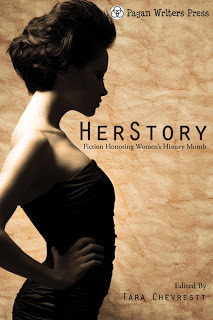
In ancient times, women were regarded as sacred. They were thought to hold the mystical power of creation—responsible for the continuation of our species. With the rise of Science and Religion, these myths were dispelled and their plight began.
HerStory: Fiction Honoring Women’s History Month is a collection of Flash Fiction and Short Stories from today's top authors featuring female characters that exemplify strong strength of mind, body, and character. Some of these tales are based on real people while others are purely fictional. However, all are standing up for themselves and what they believe in.
Grab yourself a glass of wine or favorite hot beverage and get comfortable as you read about the lives of women who will light the fire in your soul.
It's finally here. HerStory. Available to the masses. And to honor release day, we're having a party. Use the Rafflecopter below to enter to win some terrific prizes. *U.S. residents only*
Here's what's up for grabs.
GRAND PRIZE

First Grand Prize

First Grand Prize
Because they have the same agenda: empowering girls/women, Keira's Kollection owner Mr. Wagstaff has graciously agreed to donate a Strong is Beautiful T-shirt. One very lucky woman is not only going to walk away with a paperback copy of HerStory and be empowered through words, but she will also be showing her empowerment right there on her shirt.
And that's not all, the grand prize winner also gets a pair of earrings from Cathy from Etsy, who runs Yesware. The earrings sparkle one side and have a message on the other side: the greatest story never told.
Only, we're telling it, the authors of HerStory. We are telling it.
SECOND GRAND PRIZE

Author Laura DeLuca has donated an incense diffuser to go along with some handmade soap from Greenchild Creations.
And we're throwing an e-book into this mix. Why soap and diffusers? What does that have to do with women's history?
In HerStory, Mathilda of Ringelheim runs a bath house. It seems appropriate to honor herstory this way.

AND as Mathilda seems to know, every woman needs soap and every woman needs time to relax. So one lucky winner will take a nice long shower with her fantastic handmade soap, set her diffuser on a table, and curl up with HerStory on her kindle. Who says you can't be relaxed and empowered at the same time? (and smell good)
THIRD GRAND PRIZE
Another donation from Laura DeLuca: an ebook, a Japanese tea set, and an Oriental incense diffuser. How does this tie into HerStory?

In Please Stay, Asuka, a Japanese wife of the 1600s, is preparing the evening meal while awkwardly trying to discuss a matter--somewhat delicate--but of great importance with her husband.
As you get lost in your ebook, in Asuka's story (penned by Becca Diane), you can pretend you are there. Perhaps you feel your husband's penetrating stare. But you serve him his tea, straighten your spine, and say what needs to be said...then wait, breath held, for his reply, incense lightening the tension in the air...
FOURTH GRAND PRIZE

One lucky winner will have a chance to make their voice heard on the radio...with a $25 Amazon gift card burning a hole in their pocket!
HerStory goes behind the scenes to locate the stories of women who lived, laughed, and touched the lives of generations...
Now, here is your chance to have your story told to the world....or your mother's...it's your chance to talk about the most inspiring woman or women in YOUR life. Shout it out! Tell listeners everywhere about this amazing person. Honor her!
This prize is being donated by Indie Reviews Behind the Scenes.
PRIZE 5, FOUR WINNERS, FOUR TINS OF EMPOWERMINTS

Four of these tins of mints are being donated by the Unemployed Philosophers Guild. That means four lucky winners are going to win a tin of mints to carry around in their pockets and every time they look at the tin, they'll be empowered!
The tin is also the perfect size to serve as a pillbox once the mints are gone. This is something you can keep for a LONG time.
PRIZE 6, TWO WINNERS, CROSS STITCH WALL HANGINGS
Author and editor Tara Chevrestt has a secret addiction and hobby. It makes her feel like an old lady, so she keeps it under wraps, but now the truth is out...

She likes to cross stitch!!!
And with the suffragette tales (Sister Suffragettes by Dahlia DeWinters and Chevrestt's own From You No and Silent Suffragette) in the back of her mind, she found a pattern on Etsy by Patternbird and set to stitching.
Two lucky winners will walk away with these. They are 3.25" by 6" and have a hard backing so they may be placed on a wall.
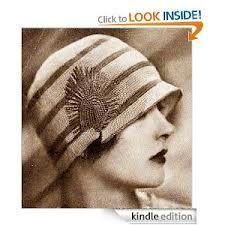
PRIZE 7, ONE WINNER, FLAPPER-STYLE HAT
Donated from Rakestraw Book Design.
Toni Rakestraw, one of the HerStory contributors, is stitching this hat so one lucky reader can--in her mind--march in a suffragette parade as she reads HerStory. Or perhaps this is something Margaret Sanger would have worn as she leaves the workhouse in The Woman Rebel.
PRIZE 8, ONE WINNER, ONE PAINTING

You've heard the term multi-published and many of HerStory's authors can place that before their name, but how about multi-talented?
Author Morgan Summerfield can not only write as she shoes us in Adella, but she can paint too! She is kindly donating a painting 27" wide by 11" high, titled Morning Poppies. The frame is handmade with real wood and she stretches all her own canvases. It is hand-painted-by her!-in multi media.

And last, but certainly not least, we have a lovely Coco Chanel quote pendant donated by the lovely Jewelry Designs by Lula. One winner will win this delightful pendant that says A girl should be things: WHO and WHAT she wants.
I could not have said it better.
Enter for all prizes using the Rafflecopter form below. Giveaway is for three weeks. Winners will be notified via email and will have 48 hours to respond with their snail mail addresses. After 48 hours, new winners will be chosen.
Thank you and enjoy HerStory! Be empowered! Learn something. Believe in yourself and womankind.
Buy links:
Smashwords
Barnes and Noble
a Rafflecopter giveaway
WE LOVE COMMENTS

From History and Women









Published on March 08, 2013 05:40
March 7, 2013
THE SHE-WOLF OF ROME - the woman they just couldn’t kill
Her mother is remembered by history as a modest and heroic woman.
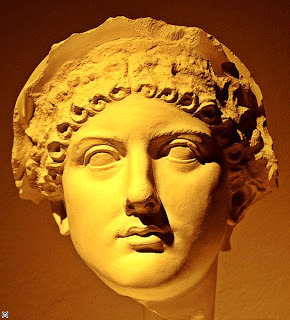
photograph:
MrArifnajafov
Agrippina the Younger isn't.
She came from a line of Roman bluebloods; her father was a popular general
and politician, while on her mother's side she was great
grand-daughter of the Emperor Augustus (the one who defeated Cleopatra) and the
adopted grand-daughter of the Emperor Tiberius.
She was born at a Roman outpost on the Rhine, near present day Cologne.
When she
was 13 she married her second cousin Domitius who, although wealthy, was - according
to Suetonius - “a man who was in every aspect of his life, detestable"
When she was 21 the emperor Tiberius died and her only surviving brother,
Caligula, became the new emperor. A man who was, in every aspect of his life,
degenerate.
Nevertheless, Agrippina’s star began to rise. Caligula loved his sisters very
much; too much. Today he might plea bargain 2-5 years too much.
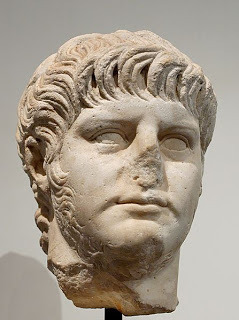
That
same year she gave birth to a boy - Lucius
Domitius Ahenobarbus, better known to the world today as Nero.
When her husband was congratulated by friends on Nero’s birth, he
supposedly replied: "I don't think anything produced by me and Agrippina
could possibly be good for the state or the people."
Portentous words.
When Agrippina's sister, Drusilla, died of fever, Caligula went insane. She was the sister he loved too much most of all. The
party was over: Agrippina and her other sister, Livilla, turned on him. They were involved in the Plot
of the Three Daggers, a failed attempt to murder Caligula and install Lepidus as
the new Emperor.
Instead, Lepidus was executed and the two sisters had to sell their
slaves and (gasp!) jewellery and were exiled.
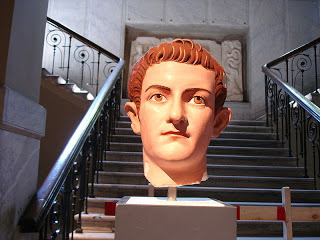
Caligula. Photograph: Giovanni dall'Orto
When Caligula was finally murdered, Agrippina’s uncle, Claudius, became the new
Roman Emperor. Her husband conveniently died and Agrippina returned to
Rome, still hungry for the game. She put the moves on an up and coming general
called Galba (he later became emperor) but he was a happily married man and told her so. His mother-in-law
then gave Agrippina a good slapping in public.
A minor setback. Agrippina’s brother-in-law then divorced her dead
husband’s sister so he could marry her.
Yes, really. He was very rich and well connected.
Even better, he had the good
grace to die soon afterwards and leave everything to Agrippina’s son. There
were rumours she had poisoned him. Just as there were rumours she had poisoned Domitius.
Co-incidence.
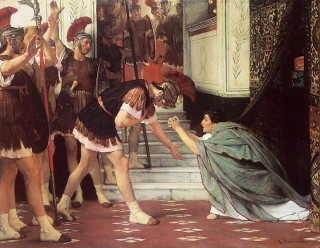
Two wealthy husbands, both dead; Agrippina was doing very well indeed.
Then the empress Messalina was executed for trying to poison Claudius (the leading
divorce lawyers in those days was a firm called Hemlock, Henbane and
Nightshade.)
Incredibly, Claudius considered remarrying for a fourth time.
Agrippina climbed onto uncle’s lap, incest being a family tradition, so to
speak. She persuaded him to marry her.
Even the Romans considered this immoral.
But this did not deter Agrippina. She consolidated her hold on power by
having Caligula’s other ex-wife, Lollia, convicted for sorcery. After her suicide
she became the most powerful woman in Rome.
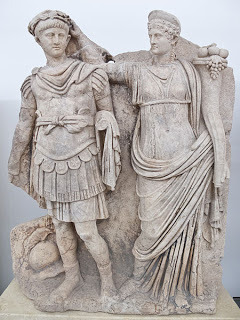
photograph: Kadellar
She manipulated Claudius into adopting her son, making Nero his
successor and depriving his real son, Britannicus, of his heritage. She then
married Nero to Claudius’s daughter, Octavia, his step-sister.
There are families in the Ozarks who would frown at this behaviour.
When Claudius tried to renege on this arrangement Agrippina is said to have
divorced him with a plate of poisonous mushrooms. She then became a priestess
of the cult that deified him after his death.
Perverse? You decide.
Nero became the next emperor and she hoped he would be her puppet. But now he had everything he didn't want her interfering anymore so she decided to switch
her allegiance back to Britannicus.
You guessed it.
Nero had him poisoned at a banquet. For the next 3 years no one in Rome ate
anything. Agrippina was forced out of the palace. Nero even took away her
bodyguards.
But now he wanted her out of the picture completely. Three times he tried to
poison her but each time she had the antidote on hand. So Nero settled on
an idea so ingenious it would make even the CIA wince. He rigged his mother’s bed so that when she laid on it a mechanism
collapsed the ceiling. Nice idea - but Agrippina had a slave warm her bed for her
every night; the poor woman died - working flat out, as it were.
Well before the Titanic, Nero then invented the
self sinking boat. He invited her onboard to celebrate the feast of Minerva,
and dropped the upper deck on her, but a sofa broke the fall. Nero then ordered
the crew to scuttle the ship.
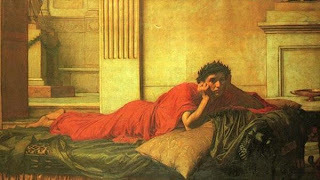
'I wish I hadn't killed Mummy.'
After the sinking, one of Agrippina’s friend
shouted out to a rescue boat that she was Agrippina, thinking they would come
and save her. Instead they bludgeoned her to death with their oars.
Agrippina meanwhile safely reached the
shore.
Losing all patience Nero gave up on
dirty tricks and sent three men to stab her at home. Her reputed last
words were: Stab me in the womb first, a not too oblique reference to the son who sent her assassins.
If she wanted to prick his conscience, it worked. Having finally
murdered his mother, Nero was spooked. He had his mother’s death on his
conscience the rest of his life. He suffered recurring nightmares, and saw her
ghost so often he hired Persian magicians to scare her away.
Agrippina was a formidable woman. During her life she boasted an impressive
list of lovers, including her brother, her brother-in-law, her son’s tutor, her
uncle, and according to Suetonius, her son as well.
She once visited astrologers
to ask about her son’s future. They told her that he would one day become emperor
and kill her. She replied, "Let him kill me, provided he becomes emperor.’
She got her wish.

Colin Falconer is the author of the internationally bestselling CLEOPATRA, DAUGHTER OF THE NILE and over twenty other novels.
See more history from Colin Falconer at
LOOKING FOR MR GOODSTORY
WE LOVE COMMENTS

From History and Women









Published on March 07, 2013 22:36
March 6, 2013
Katherine de Valois - The Forbidden Queen - A Novel by Anne O'Brien
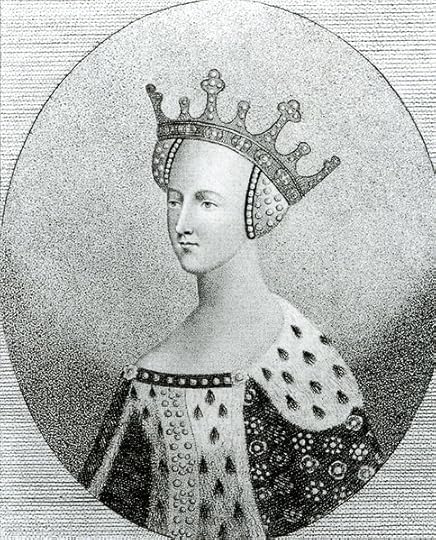
Katherine de Valois
Katherine de Valois was the daughter of King Charles VI of France and Isabelle of Bavaria. When she was fourteen, her parents entered into negotiations to marry her to King Henry V of England who demanded a large dowry and acknowledgement of his right to the throne of France.
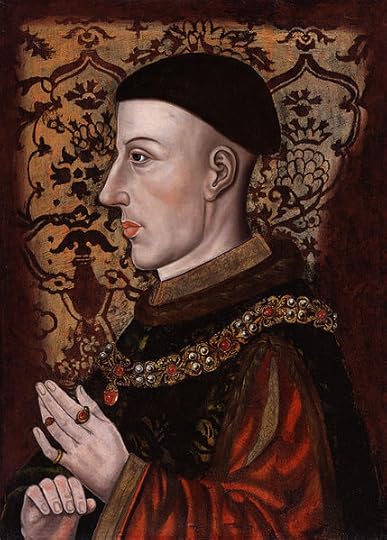
Henry V
After much bantering back and forth, the deal was struck. The moment Henry saw Katherine, he was smitten by her great beauty and they were soon married. True love grew between them and Katherine was very happy with her new surroundings and husband.
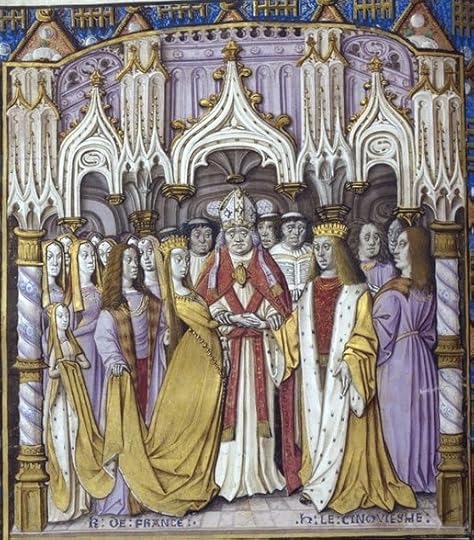
Katherine's marriage to Henry V
In 1421, while Henry was fighting in France, she gave birth to a son and named him after his father.
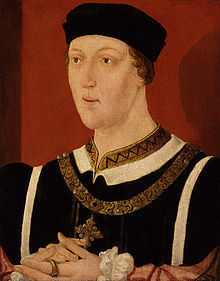
King Henry VI
Katherine and Henry V's son as an adult
Before the king could return home to meet his namesake, he died of dysentery. At the tender age of 21, Katherine became a widow. Not long afterwards, her father died, leaving the infant Prince Henry to be become king of England and in parts of France.
In time, Katherine fell in love with Edmund Beaufort, her late husband’s cousin. Humphrey, her late husband’s brother, concerned she might remarry, introduce a bill in Parliament making it impossible for Katherine to remarry without the king's consent. If she did so, her husband would lose his lands and possessions, but their children would be considered members of the royal family. Oh, and he also included the clause that the king must have reached his majority before he could grant his approval. At the time this new law was set in place, the king was only six years old. Edward Beaufort abandoned his ambitious quest to marry the dowager queen and soon found himself another wife. Katherine was trapped, kept under watch by the king’s counsellors.
Ah, but soon, love returned to her life in the form of a handsome man named Owen Tudor of Wales. An impoverished noble, he worked as the keeper of her household and wardrobe. Their love burgeoned, they secretly married, and she soon bore him a child, sending shock waves and scandal through the court.
Author Anne O'Brien captures the details of Katherine's life in a fabulous biographical novel.
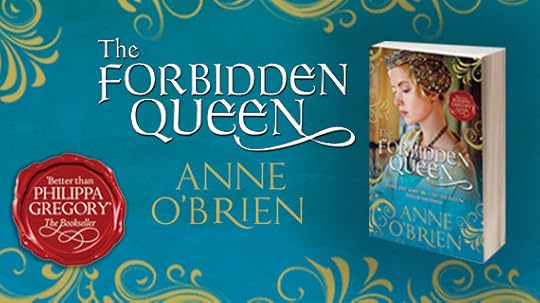
Synopsis
1415. The Battle of Agincourt is over, and the young princess Katherine de Valois is the prize to be offered to Henry V of England. The innocent Katherine is smitten with Henry, but soon understands that her sole purpose is to produce an heir to unite England and France. When Henry leaves her a widow at the age of 21, Katherine is forced to resign herself to a quiet life as the Dowager Queen; her duty is to raise her son, the young King of England, and little more.
But Katherine is still young and passionate. Many desire her, and her hand in marriage is worth a kingdom. Setting aside those driven by ambition, Katherine falls in love with her servant Owen Tudor, and glimpses the happiness that love can bring. But their enemies are circling, all battling for power and determined to prevent their marriage. Katherine will have to fight to control her own destiny…
My Review
The Forbidden Queen is a historical novel that sticks close to the facts. The story is conscientiously written with lush detail and historical insight. What I found most compelling were the struggles Katherine faced as she fought to stay close to her son while machinations were at work to keep her at a good distance from any decision making. She was to appear by the boy-king’s side, but was prevented from holding any influence over him.
I had never read a novel about this lesser known queen, and was thrilled to have her story portrayed with such passion, elegance, and vivid detail. The writing flowed easily, making it a pleasant read. Highly recommended.
WE LOVE COMMENTS

From History and Women









Published on March 06, 2013 13:09
February 17, 2013
A WOMAN CALLED 'KEEPS WARM WITH US'
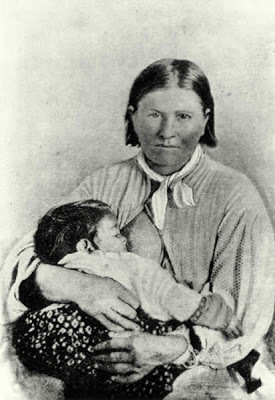
She was christened Cynthia Ann Parker, but she would have told you her name was Naduah -'Keeps Warm With Us.'
Hers is one of the great love stories of the Wild West - and ultimately one of the saddest.
She was born in 1824, to Silas and Lucy Parker in Illinois. When she was 9 years
old the family moved to north-west Texas to follow the American Dream - land
and a better life. They went to Fort Parker, established by Cynthia’s
grandfather, in what is now Limestone County.
But
on May 9, 1836, around a hundred Comanche and Kiowa warriors attacked the fort,
killing many of the men, including her grandfather. Cynthia and five other
captives were led away. One teenage girl escaped; four others, including her
brother John, were later released for ransom.
Cynthia
was beaten and treated as a slave at first, but her life improved when she was
adopted by a Comanche couple, who raised her like their own.
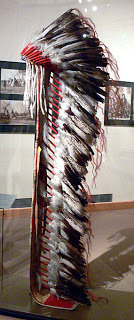
While
still barely a teenager she married Peta Nakoni, (Camps Alone), a Comanche chieftain. It
turned out to be an extraordinarily love match. It was traditional for Comanche
chiefs to take more than one wife but he never did. They had three
children; the future and famed Comanche chief Quanah Parker; another son Pecos
(Pecan), and a daughter Topsannah (Prairie Flower).
A newspaper account from 1846 describes how a trading party led by Colonel
Leonard G. Williams came across a tribe of Comanches camped on the Canadian
River. Williams offered a ransom of 12 mules and two mule loads of goods to the
tribal elders for Parker but he was refused, and in subsequent sightings,
Parker would run away and hide to avoid being traded back. The Indians said she
loved her husband and children too much to leave them. These reports were not believed.
In
the winter of 1860, a small band of Texas Rangers surprised a group of Comanche at a meat camp
at Mule Creek on the Pease River; most of the men were away and the raid turned
into a massacre of women and children.
The Rangers executed a man they thought was Nakoni but he later turned out to be a Mexican
slave. Parker attempted to flee on horseback with her daughter but was
captured.
It was then the Rangers realized that the woman in the deerskin and
moccasins had blue eyes and that she might be the missing Cynthia Parker.
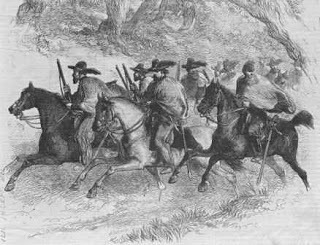
When she overheard her name banded around by the Rangers she patted herself
on the chest and said, “Me Cincee Ann.” Her fate was sealed.
Cynthia Ann and Prairie Flower were taken
back to an army post. While traveling through Fort Worth she was photographed
with her daughter at her breast and her hair cut short-a Comanche sign of
mourning. She thought that her husband was dead and her sons too.
The
story of her ‘rescue’ transfixed the nation. She was treated like a hero. Texas
granted her four and a half thousand acres of land and a pension of $100 per year.
Her brother, Silas Junior., was appointed her guardian in 1862, and took her home to Van Zandt County.
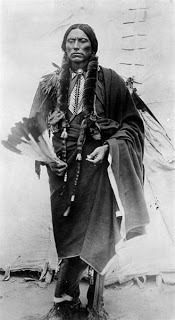
Chif Quanah Parker
But
she never adapted to her new life. She was shuttled from one family to another,
often locked in her room to prevent her escaping. In
1863, she heard that her son Pecos had died of smallpox, and a few months
later, Prairie Flower died of influenza. She was overwhelmed with grief.
Later she learned to weave and sew and created home remedies from local plants
and herbs. But she she rarely spoke much. Broken in spirit and an exile
among her own race, she died in 1870 from complications arising from a long and
self imposed fast. She never knew that her oldest son, Quanah had become the
last Comanche Chief, later to become the principal spokesman of the entire Comanche
nation after their defeat.
Footnote: The
character 'Stands With A Fist' in Kevin Costner’s 1990 movie 'Dances with Wolves' is
based on her. Cynthia is buried in Fort Sill, Oklahoma,
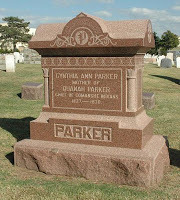

Colin Falconer is the author of the internationally bestselling AZTEC and over twenty other novels.
See more history from Colin Falconer at
LOOKING FOR MR GOODSTORY
WE LOVE COMMENTS

From History and Women









Published on February 17, 2013 13:23
February 15, 2013
Emma of Normandy - Shadow on the Crown by Patricia Bracewell
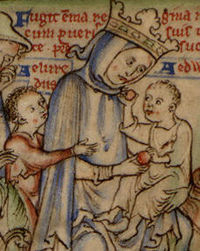
Emma of Normandy
988–1052
Emma of Normandy, the great-aunt of William the Conqueror, was
wife to two English Kings, and mother to two others.
King Aethelred the Unready sought her hand in marriage to secure
Normandy as an ally to England. Despite the fact he dislikes her, she bears him
two sons, Alfred and Edward the Confessor. Because Aethelred already had sons
from a previous marriage, the succession to the crown for Emma’s two sons was
far from certain.
When Aethelred died, Canute the Great showed came knocking
at her door seeking marriage. This time, Emma insisted that any sons born to
her from this marriage be given preference to succeed as king over Canute’s son
from his previous marriage. Before he would agree, the cunning Canute demanded
tit for tat – Emma must also repudiate the claims of her own sons to the crown
of England in favor of their future sons. This she did, alienating her sons,
shattering their trust in her, and rendering their relationship cold and distant
from that day forward.
Emma reigned happily as Canute's queen for eighteen years. Together
they had one son, Hardicanute. When Canute died, however, all promises made
seemed to hold no weight. Discord broke out between all their sons from both
marriages as they battled young Hardicanute for the crown. When Canute’s eldest
son claims the throne of England, Emma is sent into exile. After much
bloodshed, both sons of Canute, as well as her son Alfred, were killed. Her son
Edward the Confessor, who wisely stayed out of the conflict and never sought
the throne, ended up with the crown of England.
Patricia Bracewell brilliantly writes of Emma's life in the novel, Shadow on the Crown.
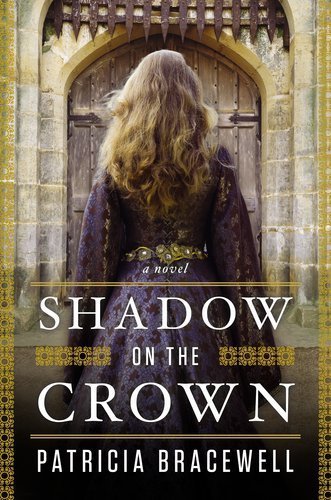
Book Synopsis
A rich tale of power and forbidden love revolving around a young medieval queen
In 1002, fifteen-year-old Emma of Normandy crosses the Narrow Sea to wed the much older King Athelred of England, whom she meets for the first time at the church door. Thrust into an unfamiliar and treacherous court, with a husband who mistrusts her, stepsons who resent her and a bewitching rival who covets her crown, Emma must defend herself against her enemies and secure her status as queen by bearing a son.
Determined to outmaneuver her adversaries, Emma forges alliances with influential men at court and wins the affection of the English people. But her growing love for a man who is not her husband and the imminent threat of a Viking invasion jeopardize both her crown and her life.
Based on real events recorded in the Anglo-Saxon Chronicle, Shadow on the Crown introduces readers to a fascinating, overlooked period of history and an unforgettable heroine whose quest to find her place in the world will resonate with modern readers.
Shadow on the Crown by Patricia Bracewell tells the
fascinating story of Emma of Normandy. With flowing narrative, Emma’s life is
brought to light in great detail and foresight. From Viking attacks to deadly
family conflicts, this novel is so brilliantly written that I could not put it
down. I was engaged to the very end. Aethelred’s dislike and lack of respect for
Emma is poignant, her unhappiness heart-wrenchingly depicted. Amid a hostile
court, Emma perseveres and struggles to make her way and define her role. It is
a story of love, hate, betrayal, and perseverance. Riveting from start to
finish.
WE LOVE COMMENTS

From History and Women









Published on February 15, 2013 11:40
February 9, 2013
Lavinia Fontana
Lavinia Fontana (1552-1614)
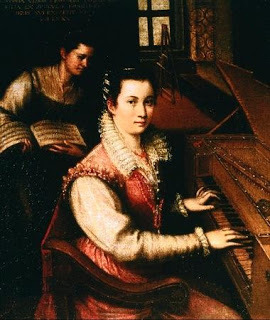
Self-portrait- Lavinia at the clavichord
Here is yet another fabulous lady in history, Lavinia
Fontana. This worldly renowned artist, was
born in the late sixteenth century at a time where women had very little clout
when it came to expressing themselves through art. But, lucky for her,
her father, Prospero Fontana, was a famous art teacher at the School of Bologna and therefore commissioned to great works in in their native city.
This made it easy for Lavinia to practice her craft daily- art was everywhere
around her. So it was that Lavinia-even
if not male- carried on the family tradition and business of making art for
sale.
Bologna being such an avant-garde place to flourish, Lavinia
initially painted for the well known nobles of Bologna. The aristocracy loved her and commissioned
her to paint their family portraits.
Besides portraits, Lavinia dabbled in several different genres and one
of her trademarks was altar art for churches.
Word of such great talent soon reached the ears of Pope
Clement III where in no time he summoned Lavinia to Rome. Lavinia
was quickly integrated into upper class circles where she was soon sought after
by Pope Gregory XIII as well. Her art naturally progressed onto the more religious type genre and was much favoured by the Church.
It was indeed a rarity for a female artist of those times to
be so well accepted- especially by the Vatican. One can only imagine what it
must have been like to have both Popes (Clement III and Gregory XIII) as
subjects in all their regalia, posing for her!
Although Lavinia dedicated much of her life to art, she did not remain single. She met Gian Paolo Zappi while
working in her father’s studio. Another marvel
for those times; Lavinia was the bread winner in that household! Zappi readily gave up his career to stay at home and
take care of their 11 children and also helped Lavinia out as her art
assistant.
Lavinia is known for having produced the largest number of
art pieces ever for a woman of the Renaissance.
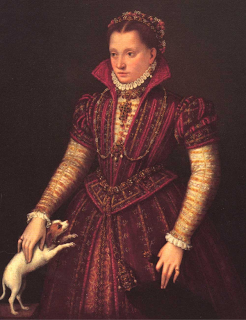
Portrait of a noblewoman, by Lavinia Fontana
A book on Lavinia Fontana, by Caroline P. Murphy:
Lavinia Fontana:
A Painter and Her Patrons in Sixteenth- century Bologna
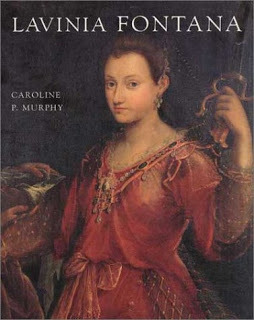
Another great historical woman of substance!
WE LOVE COMMENTS

From History and Women









Published on February 09, 2013 11:20



